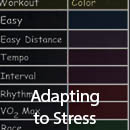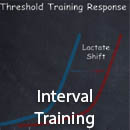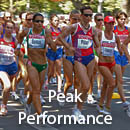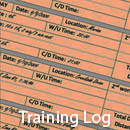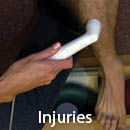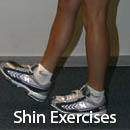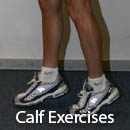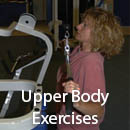Race Walking Training
Peak Performance Phase - Rythm Workouts
During the peak performance phase you add another type of training: the rhythm workout, a somewhat complicated undertaking. Although rhythm workouts are beneficial during early phases of training, I do not usually recommend attempting them until a walker attains a good understanding of and discipline in pacing workouts. My flavor for rhythm workouts is short, quick intervals. Four sets of intervals comprise the session, all walked at faster-than-goal race pace. Each set of intervals includes sustained efforts at distances of 100 meters (110 yards), 200 meters (220 yards), and 300 meters (330 yards). The challenge of mastering this workout is completing each repetition at the same pace. Do not sprint the 100-meter segment faster than the 200-meter or 300-meter segment. Instead, determine how fast you can walk the 300-meter segment and use that as your guide for the other distances. The 100-meter interval should take exactly one-third the time of the 300-meter interval, with the 200-meter repeat taking two-thirds the time of the 300-meter interval.

In between each repeat, walk 100 meters slowly until you reach the 100 meter mark, and then start the next interval immediately. When you finish a set of intervals, walk 100 meters slowly and then begin the next set of repeats immediately. Observe the chart below. It depicts one complete set of rhythm intervals, with the faster-than-goal-pace race walking illustrated in red and the recovery interval in blue.
This workout begins easy and gets tougher as you progress through the sets. If you find yourself slowing down on the longer reps or later in the sets of intervals, you started too fast. Take note and start slower next time. On the other hand, if you find your pace accelerates from set to set, go for it!
In our sample schedule for a 50-minute 10K race, we estimate that all-out walking for 400 meters—440 yards, or once around the track—can be accomplished in about 1:35. If we back off that time just a little, we arrive at a 1:40 pace as a reasonable speed for beginning repeats in the rhythm workout.

If you start out a little conservatively, you might do the first set a hair slower. At the end of each set, progress immediately into the next set. No rest for the weary!







